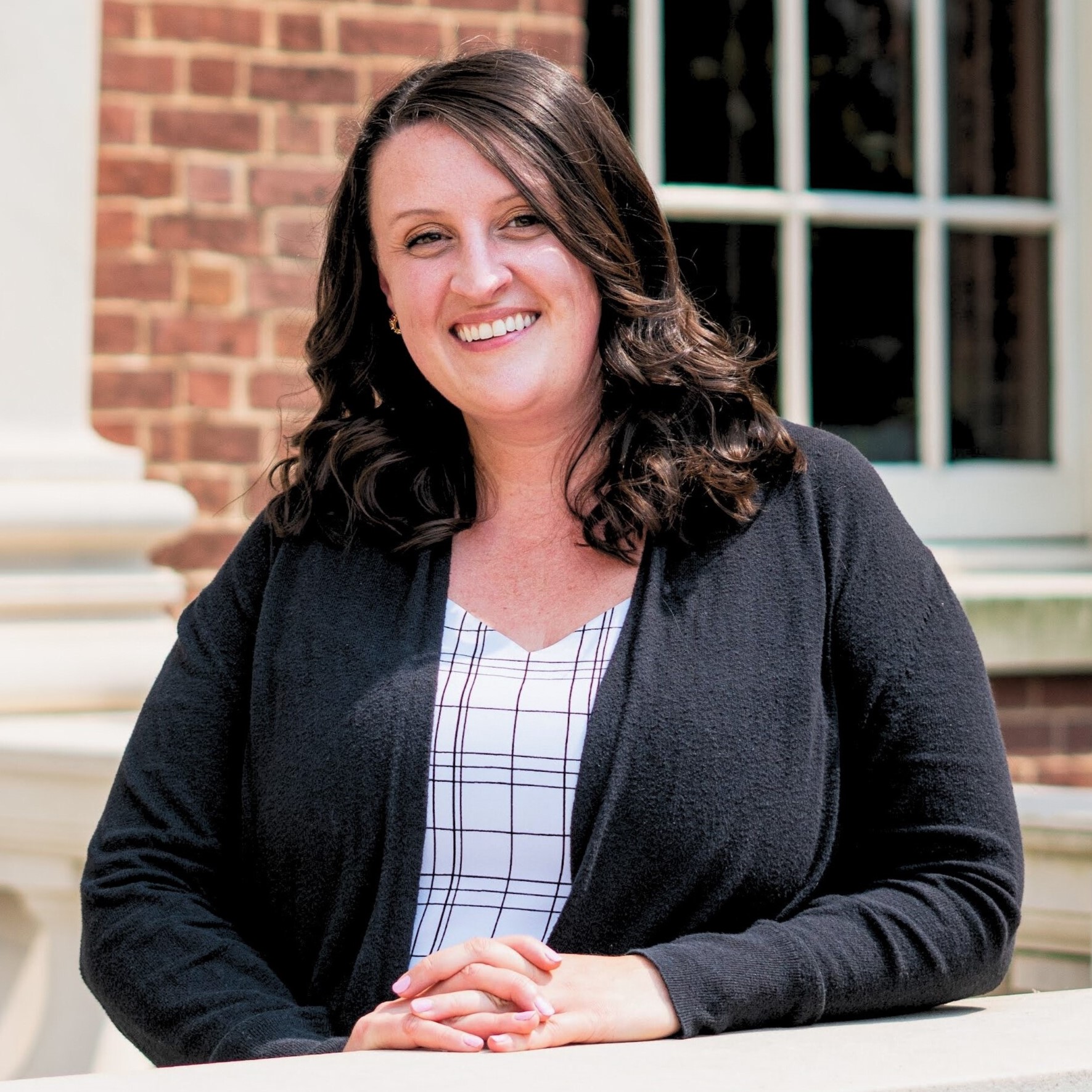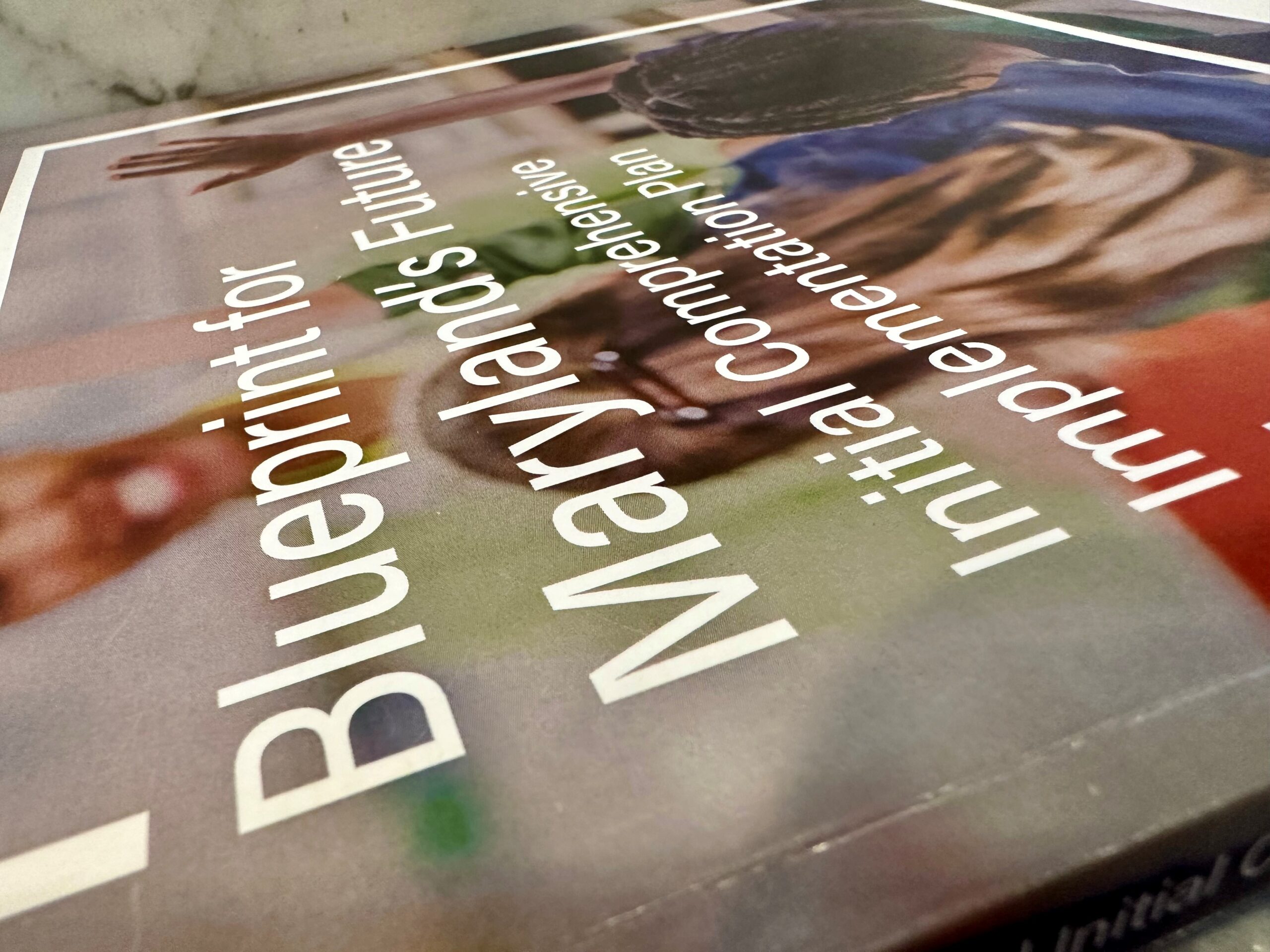‘Blueprint’ Advocates Keep Hope Alive as Deadline for Hogan Action Nears

With schools closed for more than a month, lawmakers and advocates in Maryland say a multi-billion-dollar education reform effort passed by the General Assembly as COVID-19 was just beginning to take hold is more critical now than ever, even with a faltering economy and uncertain fiscal future.
Gov. Lawrence J. Hogan Jr. (R), at a news conference earlier this month, said he’s given little thought to the bills passed during the recent pandemic-shortened legislative session as he focuses efforts on combating the spread of COVID-19, but he’s unlikely to sign any bills into law that would increase state spending.
The governor will need to make a decision on more than 650 bills by early May. He can sign the bills, veto them or take no action, which would allow the measures to take effect without his signature.
The Blueprint for Maryland’s Future carries a multi-billion-dollar price tag. After a 10-year phase in, state education funding would increase by more than $2.8 billion annually; mandated local education spending would increase by more than $566 million annually after 10 years.
Blueprint policy changes would expand pre-kindergarten programs and career education for high schoolers, increase pay and career opportunities for teachers, and increase state funding for schools with high concentrations of poverty.
But Hogan’s decision over the fate of the bill comes at a much different time than when it was passed in March. All school children in the state have been learning at home, and parents may have a new appreciation or understanding of the difficulties facing teachers. At the same time, the state’s financial situation continues to darken as more than 296,000 Marylanders have filed for unemployment in the past four weeks, and fiscal prognosticators are predicting a dire situation for the state coffers.
But the pandemic sending children home to learn has highlighted what advocates say is at the heart of the Blueprint bill ― economic and racial disparities in education.
“The essence of the Blueprint bill is, if anything, more important now than ever,” said William E. “Brit” Kirwan, who chaired the Commission on Innovation and Excellence in Education that wrote the reform policies included in the bill.
One of the major findings of the commission was inequities in school funding and the uneven quality of education around the state. Now, the same communities with poorer quality schools have been disproportionately hit by the COVID-19 virus ― in physical health and in the ability to access distance learning through technology, Kirwan said.
“All of the reasons built into the commission’s work and in the Blueprint bill are just as important today as when the bill was passed,” he said. “If anything, I think the moral imperative is greater because of these inequities.”
Lawmakers and advocates said this week that the Blueprint policy bill should be allowed to take effect because the first three years of the plan can be paid for without new taxes.
Additionally, lawmakers built in a safety valve to the Blueprint at the last minute, when the state was starting to see the potential effects of the coming crisis. Sen. Guy J. Guzzone (D-Howard), chairman of the Budget & Taxation Committee, said that last-minute amendment to the bill from the Senate ― loathed at the time by progressive advocates ― could now be the bill’s saving grace by allowing the reforms to still be implemented, but in a more fiscally restrained way.
The amendment from Senate Majority Leader Nancy J. King (D-Montgomery) would limit education spending increases to the rate of inflation if state revenues drop by 7.5% in a given year.
The fiscal prudence prompted six Republicans in the chamber to join Democrats in supporting the bill.
“The way we proceeded with the bill toward the end of session ― ensuring that money would be there before it was actually implemented ― is a critical component,” Guzzone said. “…There’s so much good policy work that’s been done, it seems to me that it’s reasonable that we should continue pushing for that. We are going to come out of this at some point, and when we do, we want the best for our kids.”
But King said this week that the amendment might not provide enough fiscal control given the current economy.
“I have such mixed emotion about it. Because we put such effort into the bill,” King said in an interview. “I don’t back down from [the policy proposals] at all. That said, in the current fiscal situation, I don’t see how we can move ahead with it.”
She suggested that lawmakers may have to “go back and take a hard look at everything we did in the last session.”
“None of us know how bad the bottom line is going to be fiscally,” King said. “We can’t make promises at this point.”
House Majority Leader Eric G. Luedtke (D-Montgomery) said he hopes a constructive and measured relationship between the legislature and the governor since the start of the COVID-19 pandemic can continue, and extend to the education reform debate.
“We’re in a new world right now and we’re going to be for some time, and we’ve got to think through the impact of that for everything, including our schools,” he said. “When we get back to a more normal situation with our schools, we’re going to need to work that much harder to make sure” that whatever learning loss has happened as a result of the virus is not permanent.
House Appropriations Chairwoman Maggie L. McIntosh (D-Baltimore City) said she doesn’t have a “crystal ball” to know how Hogan will handle the bill, but expressed hope that the governor and other state leaders will unite to work out a path forward.
She said that the current state of affairs provides ample evidence as to why education reform is necessary.
“What this pandemic has done is it’s demonstrated for us once again … that kids at risk right now are falling further and further behind,” McIntosh said. “The pandemic has shed a light on what was highlighted for the Kirwan Commission.”
McIntosh also said she hopes the federal government will step in to help states cope with a loss of revenue.
“I’m counting on the federal government to [help us] come out of the fiscal pain as quickly as possible,” McIntosh said this week. “This is a national responsibility.”
Hogan, as head of the National Governors Association, has urged President Trump and Congress to approve a $500 billion cash infusion for state governments.
Earlier this month, the Bureau of Revenue Estimates suggested that Maryland could lose up to $2.8 billion in revenues by June 30 if a worst-case economic scenario continues through the end of the fiscal year.
During the announcement, Comptroller Peter V.R. Franchot (D) criticized the General Assembly for passing the Blueprint bill ― and two accompanying revenue bills that could raise taxes by as much as $700 million annually once fully implemented.
“It was a bad idea as far as timing, even though we all support education reform,” Franchot said. “…The idea that we’re going to take money out of the pockets of small businesses and consumers in Maryland, anytime in the near future, is just indescribably bad judgment.”
Sen. Paul G. Pinsky (D-Prince George’s), the chairman of the Education, Health and Environmental Affairs Committee, said this week that both the Blueprint bill and the revenue measures should take effect, by a veto override vote, if necessary.
“We have to jump-start the economy. And clearly the state’s economy is going to be challenged,” Pinsky said.
The state’s recent foray into distance learning has increased the popularity of the bill, Pinsky asserted.
“It would be a horrible, horrible mistake to veto it. It would be disastrous,” Pinsky said. “It would be a horrible thing for the kids of this state, especially where we are now with kids falling further and further behind.”
‘How do we make sure we have a system that serves all kids?’
Another quirk in the legislative calendar could postpone the spending mandates required in the Blueprint bill. If Hogan vetoes any bill with mandated funding and the legislature doesn’t override the veto before July 1, the governor is not required to plan for that amount in the upcoming budget year.
If lawmakers ultimately decide to forgo a special session, they could override the veto in January, when their regular session convenes and the state’s fiscal outlook may have improved. Given that the Blueprint is already funded for the first three years, this would potentially allow the reforms to take hold while preserving the state’s precarious fiscal position.
Sean Johnson, the assistant executive director of political and legislative affairs for the Maryland State Education Association, said “it’s safe to say” that King’s amendment would be triggered this year, putting a pause on blueprint spending anyway.
Johnson said that would allow the state to stall spending increases while still maintaining a commitment to the policy’s reform.
Shamoyia Gardiner, the education policy director for Advocates for Children and Youth, said that right now the state is “essentializing people” whose children will need the resources provided for under the blueprint legislation.
If the bill is enacted the conversation concerning revenue will have to be revisited, she said.
“Of course because of the pandemic,” but also because the number of residents who will need additional services under the bill will have grown, she said.
Groups including the Coalition for the Blueprint for Maryland’s Future have continued meeting to promote the legislation, albeit more quietly during the pandemic.
Joe Francaviglia of Strong Schools Maryland, said dedication to the bill remains strong as ever.
“One of the things that just weighs on me is so many kids aren’t getting what they need and what they deserve right now,” he said. “How do we make sure we have a system that serves all kids once we get through this together?”





 Creative Commons Attribution
Creative Commons Attribution